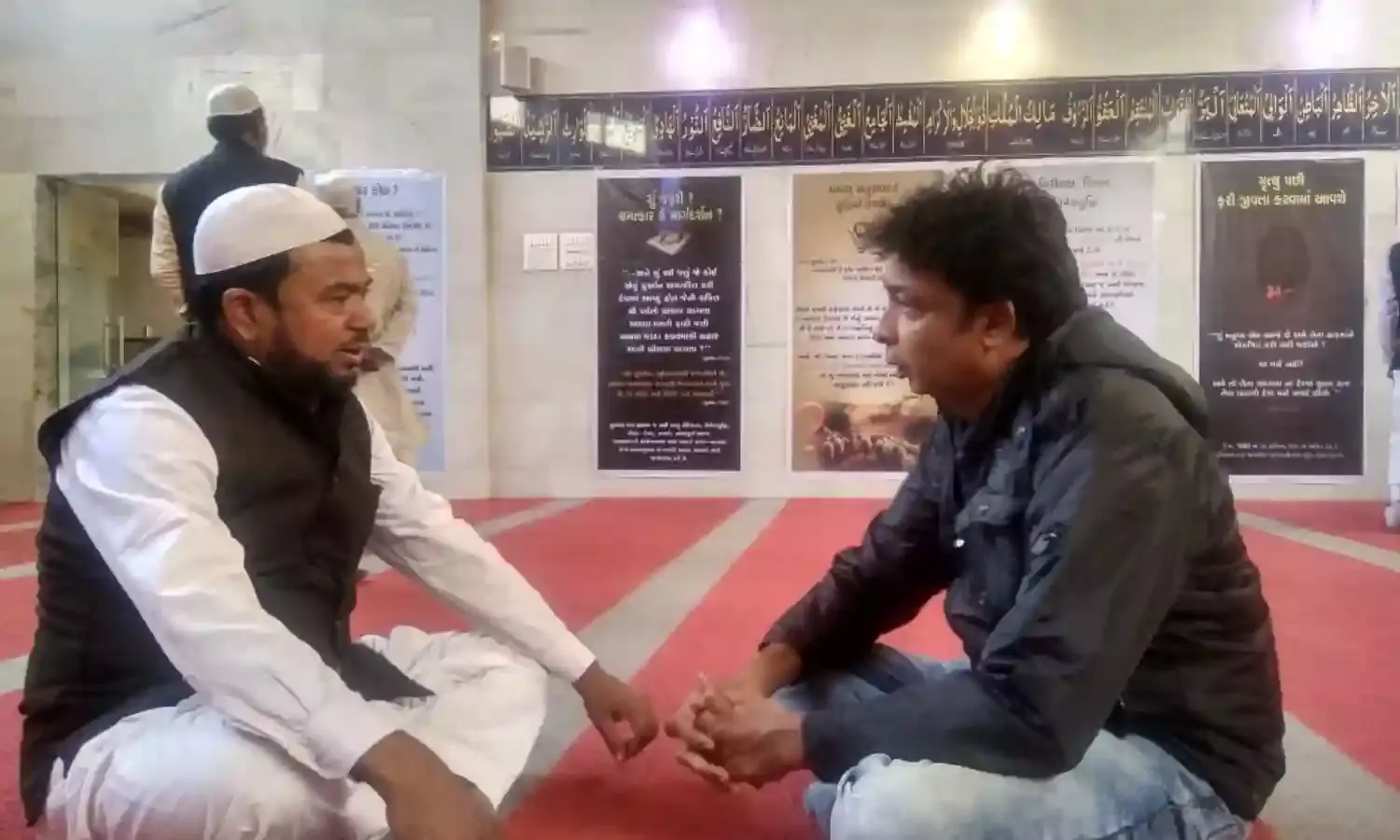Lets Visit the Mosque! A Gujarat Initiative to Dispel Negative Notions about Muslims
Muslim youngsters doing odd jobs still refrain from revealing their names

AHMEDABAD: Ahmedabad’s Bapunagar-Rakhial locality witnessed a highly charged communal atmosphere during the 2002 anti-Muslim pogrom in Gujarat. Now, in an initiative called ‘Let’s visit the mosque!’, a group of Muslims from the area are trying to dispel negative notions about Islam and its practitioners.
The exercise, started by members of the Islamic Call and Guidance Foundation, involves inviting members of other faiths living in the vicinity to visit the local mosque and interact with the imam, the trustees and the local Muslims.
Visitors are given a guided tour of the mosque, where visitors are encouraged to discuss whatever questions and notions they have about the books and practices of Islam.
The tour ends with a small exhibition on various concepts in Islam, with emphasis laid on how to deal with the negative propaganda about the religion being spread through the social media. Visitors are also served light snacks and tea.
The exercise assumes a lot of significance in a state like Gujarat, which has stood communally polarised since at least 2002, and where hatred of Muslims has been propagated by the Hindu right wing on every possible occasion.
Things have eased to some extent following the efforts of individuals and organizations to keep and repair the secular fabric, and fight against those trying to divide people on religious lines - but a lot more needs to be done.
This reporter has been witness to a reluctance among Hindus to employ Muslims, with the latter changing their names and not giving their original address when it comes to seeking jobs, and a continuous tirade by Hindus against Muslims.
“We organised the first visit by non-Muslims to the Masjid Umar bin Khattab on January 27. Encouraged by the response we have organised a similar exercise in another mosque in March. We are in discussions with the trustees of several other mosques to plan similar events, and want to make it a bigger exercise covering entire state,” said Moinuddin ibn Nasrullah, who is a trustee at the Masjid Umar Bin Khattab.
“Over the last few years,” said Nasrullah, “we have been working as volunteers at various bookstalls at an annual book fair held in Ahmedabad, and we have been noticing the kind of notions people have about Islam and Muslims. Things went a bit too far at the recent fair, when an old man said that people should keep away from Muslims. It led us to make this effort.”
At the first event around 150 non-Muslims came to visit the mosque in Rakhial, the majority of them youngsters. According to Nasrullah, “They were curious to know about wazu (ablution) and why only the exposed upper part of the body is washed; they wanted to know who an imam is and who can become one; why we pray five times a day and the significance of the different kinds of namaz…”
“Our idea is that if there can be guided tours of mosques in other parts of the world, why not here?” he added, pointing out that while many Muslims have reservations about non-Muslims entering mosques, shariat or Islamic law does not permit such discrimination.
The exhibition put up by the group, Nasrullah reported, contained panels on the concept of allah or god in Islam, on the Quran, on how Islam encourages free thinking and equality, why there is no place for suicide in Islam, why it encourages interest free banking, etc. “The emphasis was also on how not to spread rumors and hatred. We gave them examples from the Hadees (or Hadith) on how information needs to be verified before it is disseminated further,” he said.
Social activist Shamshad Pathan said, “We would like to extend this initiative to as many mosques as possible. I want it to be extended even to the madarsas, where people from other faiths visit, and if interested spend a couple of days with the students there.”
“We have to dispel the widely circulated hate messages and notions about madarsas breeding terrorists,” Pathan added, “and this can only be done by inviting people to come and see for themselves what kind of education is being given in these schools.”
Another prominent social activist, Hanif Lakdawala, harbours skepticism about the initiative’s success but is all for encouraging it. “I am sceptical because prejudice against Muslims is very deep rooted. Even highly educated people can be heard asking why Muslims sport beards and why they wear attire different from their own. It is a very difficult task to dispel such notions. But hope must not be given up and such an initiative, no matter how small, must be encouraged.”
Lakdawala recalled how after the 2002 riots, social activists had tried bringing the two communities together by organizing cricket matches, mehndi (henna tattoo) competitions and musical programmes. He believes such efforts did yield results, as now one comes across groups of Hindu youngsters at eating joints in localities like Juhapura, which is one of the biggest Muslim ghettoes in India, and is quite often referred to as ‘Mini Pakistan’ by the Hindu right wing.
At the same time, it is a fact that Muslim youngsters doing odd jobs still refrain from revealing their names. Youngsters doing whitewash or paint jobs in residential localities prefer to be addressed as Munnabhai, Pappubhai, Chhotubhai etc.
It is in this hard context that any effort aimed at bridging the gap between two communities assumes significance.



